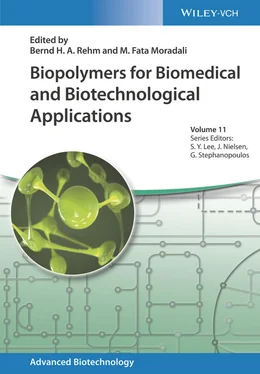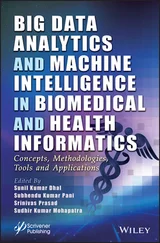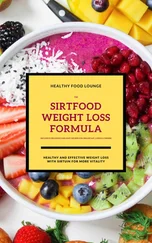89 89 Castillo, N.A., Valdez, A.L., and Fariña, J.I. (2015). Microbial production of scleroglucan and downstream processing. Frontiers in Microbiology 6: 1106.
90 90 Davison, P. and Mentzer, E. (1982). Polymer flooding in North‐sea reservoirs. Society of Petroleum Engineers Journal 22 (3): 353–362.
91 91 Pirri R., Gadioux J., Rivenq R. (1995) Scleroglucan gel applied in the oil industry. EP 1995/0484217A1.
92 92 Survase, S.A., Saudagar, P.S., Bajaj, I.B., and Singhal, R.S. (2007). Scleroglucan: fermentative production, downstream processing and applications. Food Technology and Biotechnology 45 (2): 107–118.
93 93 Asjadi, S.E., Nerderpel, Q.A., Cotiuga, I.M. et al. (2018). Biopolymer scleroglucan as an emulsion stabilizer. Colloids and Surfaces A: Physicochemical and Engineering Aspects 546: 326–333.
94 94 Zhang, Y., Kong, H., Fang, Y. et al. (2013). Schizophyllan: a review on its structure, properties, bioactivities and recent developments. Bioactive Carbohydrates and Dietary Fibre 1 (1): 53–71.
95 95 Imeson, A. (ed.) (2010). Food Stabilisers, Thickening and Gelling Agents. Wiley Blackwell: United Kingdom.
96 96 Katzbauer, B. (1998). Properties and applications of xanthan gum. Polymer Degradation and Stability 59 (1–3): 81–84.
97 97 Rottava, I., Batesini, G., Silva, M.F. et al. (2009). Xanthan gum production and rheological behaviour using different strain of Xanthomonas sp. Carbohydrate Polymers 77 (1): 65–71.
98 98 Petri, D.F.S. (2015). Xanthan gum: a versatile biopolymer for biomedical and technological applications. Journal of Applied Polymer Science 132 (23): 420–435.
99 99 Caldeira, I., Lüdtke, A., Tavares, F. et al. (2018). Ecologically friendly xanthan gum‐PVA matrix for solid polymeric electrolytes. Ionics 24: 413–420.
100 100 Tavares, F.C., Dörr, D.S., Pawlicka, A., and Avellaneda, C.O. (2018). Microbial origin xanthan gum‐based solid polymer electrolytes. Journal of Applied Polymer Science https://doi.org/10.1002/app.46229.
101 101 Naessens, M., Cerdobbel, A., Soetaert, W., and Vandamme, E.J. (2005). Leuconostoc dextransucrase and dextran: production, properties and applications. Journal of Chemical Technology and Biotechnology 80: 845–860.
102 102 Zhou, Q., Feng, F., Yang, Y. et al. (2018). Characterization of a dextran produced by Leuconostoc pseudomesenteroides XG5 from homemade wine. International Journal of Biological Macromolecules 107: 2234–2241.
103 103 Kamoun, E.A., Kenawy, E.S., and Chen, X. (2017). A review on polymeric hydrogel membranes for wound dressing applications: PVA‐based hydrogel dressings. Journal of Advanced Research 8: 217–233.
104 104 Maslakci, N.N., Ulusoy, S., Uygun, E. et al. (2017). Ibuprofen and acetylsalicylic acid loaded electrospun PVP‐dextran nanofiber mats for biomedical applications. Polymer Bulletin 74: 3283–3299.
105 105 Rai, S., Kureel, A.K., Dutta, P.K., and Mehrotra, G.K. (2018). Phenolic compounds based conjugates from dextran aldehyde and BSA: preparation, characterization and evaluation of their anti‐cancer efficacy for therapeutic applications. International Journal of Biological Macromolecules 110: 425–436.
106 106 Singh, A., Dutta, P.K., Kumar, H. et al. (2018). Synthesis of chitin‐glucan‐aldehyde‐quercetin conjugate and evaluation of anticancer and antioxidant activities. Carbohydrate Polymers 193: 99–107.
107 107 Alibolandi, M., Mohammadi, M., Taghdisi, S.M. et al. (2017). Synthesis and preparation of biodegradable hybrid dextran hydrogel incorporated with biodegradable curcumin nanomicelles for full thickness wound healing. International Journal of Pharmaceutics 532 (1): 466–477.
108 108 Cao, L., Tian, H., Wu, M. et al. (2018). Determination of curdlan oligosaccharides with high performance anion exchange chromatography with pulsed amperometric detection. Journal of Analytical Methods in Chemistry 2018: 3980814.
109 109 Liu, Y., Gu, Q., Ofosu, F.K., and Yu, X. (2015). Isolation and characterization of curdlan produced by Agrobacterium HX1126 using ‐lactose as substrate. International Journal of Biological Macromolecules 81: 498–503.
110 110 Yang, M., Zhu, Y., Li, Y. et al. (2016). Production and optimization of curdlan produced by Pseudomonas sp. QL212. International Journal of Biological Macromolecules 89: 25–34.
111 111 Chien, C.Y., Enomoto‐Rogers, Y., Takemura, A., and Iwata, T. (2017). Synthesis and characterization of regioselectively substituted curdlan hetero esters via an unexpected acyl migration. Carbohydrate Polymers 155: 440–447.
112 112 Miwa, M., Nakao, Y., and Nara, K. (1994). Food applications of Curdlan. In: Food Hydrocolloids, Structures, Properties, and Functions (eds. K. Nishinari and E. Doi), 119–124. New York: Plenum Press.
113 113 Hida, T.H., Ishibashi, K., Miura, N.N. et al. (2009). Citokine induction by a linear 1,3‐glucan, curdlan‐oligo, in mouse leukocytes in vitro. Inflammation Research 58 (1): 9–14.
114 114 Miyanishi, N., Iwamoto, Y., Watanabe, E., and Oda, T. (2003). Induction of TNF‐α production from human peripheral blood monocytes with β‐1,3‐glucanoligomer prepared from laminarin with β‐1,3‐glucanase from Bacillus clausii NM‐1. Journal of Bioscience and Bioengineering 95 (2): 192–195.
115 115 Fu, Y., Zhao, X., and Du, Y. (2011). Research progresses on plant resistance induced by β‐glucan oligomer. Chinese Journal of Biological Control 27 (2): 260–275.
116 116 Bajaj, I.B., Survase, S.A., Saudagar, P.S., and Singhal, R.S. (2007). Gellan gum: fermentative production, downstream processing and applications. Food Technology and Biotechnology 45 (4): 341–354.
117 117 Freitas, F., Alves, V.D., Coelhoso, I., and Reis, M.A.M. (2013). Production and food applications of microbial biopolymers. In: Engineering Aspects of Food Biotechnology, . Part I: Use of Biotechnology in the Development of Food Processes and Products (eds. J.A. Teixeira and A.A. Vicente), 61–83. Boca Raton, FL: CRC Press, Taylor & Francis Group.
118 118 Zia, K.M., Tabasum, S., Khan, M.F. et al. (2018). Recent trends on gellan gum blends with natural and synthetic polymers: a review. International Journal of Biological Macromolecules 109: 1068–1087.
119 119 Mariod, A. and Fadul, H. (2013). Review: gelatin, source, extraction and industrial applications. Acta Scientarum Plonorum Technologia Alimentaria 12 (2): 135–147.
120 120 Saha, D. and Bhattacharya, S. (2010). Hydrocolloids as thickening and gelling agent in food: a critical review. Journal of Food Science and Technology 47 (6): 587–597.
121 121 Pacelli, S., Paolicelli, P., Avitabile, M. et al. (2018). Design of a tunable nanocomposite double network hydrogel based on gellan gum for drug delivery applications. European Polymer Journal 104: 184–193.
122 122 Paolicelli, P., Petralito, S., Varani, G. et al. (2018). Effect of glycerol on the physical and mechanical properties of thin gellan gum films for oral drug delivery. International Journal of Pharmaceutics 547 (1–2): 226–234.
123 123 Hill, L.J., Moakes, R.J.A., Vareechon, C. et al. (2018). Sustained release of decorin to the surface of the eye enables scarless corneal regeneration. Regenerative Medicine 3: 23.
124 124 Osmalek, T., Froelich, A., and Tasarek, S. (2014). Application of gellan gum in pharmacy and medicine. International Journal of Pharmaceutics 466 (1–2): 328–340.
125 125 Öner, E.T., Hernàndez, L., and Combie, J. (2016). Review of levan polysaccharide: from a century of past experiences to future prospects. Biotechnology Advances 34 (5): 827–844.
126 126 Srikanth, R., Reddy, C.H.S.S.S., Siddartha, G. et al. (2015). Review on production, characterization and applications of microbial levan. Carbohydrate Polymers 120: 102–114.
127 127 Silbir, S., Dagbagli, S., Yegin, S. et al. (2014). Levan production by Zymomonas mobilis in batch and continuous fermentation. Carbohydrate Polymers 99: 454–461.
Читать дальше












